Hmong Hill Tribe Information
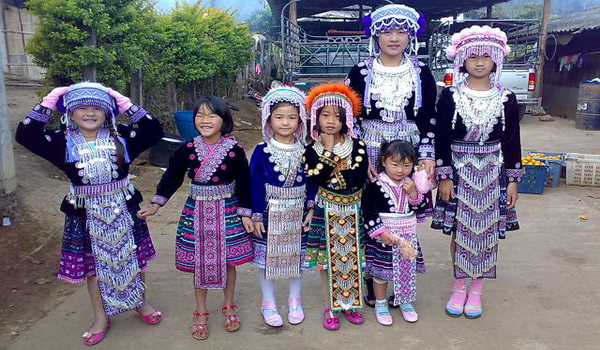
🏞️ Hmong: Weaving the Story of a Resilient People from the Highlands of Asia
From the misty mountains of southern China to the verdant hills of Northern Thailand, the Hmong people have journeyed through history, preserving a rich culture and an unyielding spirit. This article delves into the fascinating world of the Hmong, exploring their origins, vibrant traditions, and the challenges and triumphs of their modern-day lives.
📜 A History Forged in Movement and Resilience
The story of the Hmong is one of migration. Originating in the fertile plains of the Yellow River valley in China, the Hmong, known as the Miao in Chinese, eventually moved southward over centuries to escape conflict and persecution. Their strong-willed nature and fierce independence often put them at odds with the ruling powers, leading to a series of migrations that eventually brought them to the mountainous regions of Southeast Asia, including Vietnam, Laos, Myanmar, and finally, Thailand.
Their arrival in Thailand, particularly in the late 19th and 20th centuries, was marked by the tumultuous period of the Indochina wars. Many Hmong from Laos, who had allied with the United States, fled their homeland after 1975 and sought refuge in Thailand. Their adaptability and agricultural knowledge, particularly in the highlands, allowed them to establish new communities and thrive.

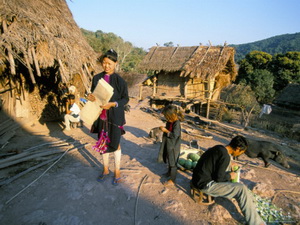
🎨 More Than Colors: The Subgroups of the Hmong
The Hmong people are not a monolithic group but are divided into several subgroups, each with distinct cultural nuances, particularly reflected in their traditional clothing and dialects. The two largest and most prominent subgroups are the Hmong Daw (ม้งขาว) and the Hmong Leng (ม้งเขียว).
- Hmong Daw: The name literally means “White Hmong,” derived from the plain white pleated skirts worn by their women during ceremonies and special occasions. The clothing is a masterpiece of batik and embroidery, often featuring intricate geometric patterns. The Hmong Daw language, with its characteristic voiceless nasals, is distinct but mutually intelligible with the Hmong Leng dialect. They are known for their strong emphasis on kinship and clan structures.
- Hmong Leng: Also known as “Blue Hmong or Black Hmong,” they are distinguished by the colorful, heavily embroidered jackets and pleated skirts, often dyed with indigo, creating a beautiful blue-green hue. Their intricate embroidery, or Paj Ntaub, tells stories of their history and mythology. The Hmong Leng dialect lacks the voiceless nasals of the Hmong Daw dialect. Their art and craftsmanship are a testament to their deep connection to nature and their ancestral traditions.
Other subgroups, such as the Striped Hmong in Nan province, also exist, each with its unique sartorial and cultural markers, reflecting the diverse journey and adaptation of the Hmong people across different landscapes.
🏡 A New Home and a New Way of Life
Upon settling in Thailand, the Hmong found themselves in a unique position. Traditionally, their way of life was based on subsistence farming and, in some cases, the cultivation of opium. However, the Thai government’s policies, particularly the Royal Project initiated by King Bhumibol Adulyadej, brought a transformative change. This initiative successfully encouraged the Hmong to switch from opium cultivation to more sustainable and profitable cash crops such as coffee, strawberries, and various temperate vegetables, elevating their economic standing and integrating them more closely into the national economy.
Today, while many Hmong still live in traditional highland villages, younger generations are increasingly seeking opportunities in urban centers. This has led to a fascinating blend of old and new, where traditional beliefs in shamanism and ancestor worship coexist with modern education, technology, and professions.
Style of dress for the white Hmong or Daw Hmong
Males
Shirts are made from soft felt, with long sleeves running down to the wrists. The body of the shirt runs down and covers the waist. In front there are two tabs of fabric that run down the full length of the shirt. On the back, the shirt is likely to have a beautiful embroidered design. A modern trend is to include a zipper along the edges of the shirt and down the front for ease and convenience.
The pants would be of the Chinese “guay” style, tight at the waist and then tapering out. There may be a small pattern on them. A piece of red fabric is wrapped around the waist and over the pants. Another belt made of silver may also be worn over this for added flair.
Females
Shirts are made from soft felt. The colors of choice have been dark blue or black, but these days more variations in color are beginning to be seen. The sleeves are long and have a beautiful design embroidered on them.
In front there are two tabs of fabric that run down the full length of the shirt. A design is embroidered on them. White Hmong women (Hmong deur) would wrap a solid-white pleated skirt around them, leaving a split where the fabric meets at the front. This would be covered over by a squared section of beautifully embroidered fabric. A piece of red fabric would be wrapped around the waist, leaving one end hanging loose down the back to act as a tail-of-sorts. At present,the trend is to only wear white-colored dresses on very special occasions. One reason for this, of course, white’s nasty tendency to show dirt and stains quite easily. The new hit is Chinese-style pants and a shirt rather than a dress. A long squared piece of fabric would be hung from the waist, down the front and back. Usually a beautiful piece of embroidery is added along with a red strip of fabric wrapped around the waist.
As for the woman’s head wrap, white Hmong like to wind their hair into a bun toward the front of the head and wrap it with an embroidered black cloth around the head. Depending on the importance of the occasion, other ornamentation may be added, such as rings, necklaces, bracelets, and earrings. These items would be made of silver and decorated with silver coins of varying sizes, both triangular and circular in shape. Even the shoulder bags women carry would be decked out in luxurious silver bobbles. The shoulder straps would be placed over both shoulders with the bag hanging off the back.

Historical dress for a Hmong male

Historical dress for a Hmong female

Current traditional dress for a Hmong male

Current traditional dress for a Hmong female
Style of dress for the Blue Hmong or Leng Hmong
Males
The shirt should hang down to the waist and the sleeves to the wrists. The shirt divides into two pieces with the top layer overlapping the bottom one over the left breast. The thread and fabric is dyed using very strong eye-catching colors and an intricate pattern in embroidered on.
The pants must match the shirt in color. They are quite baggy down to the ankles where they are tapered in. The crotch of the pants droops down below the knees. A red sash is wrapped around the waist to hold the pants in place. A beautiful pattern will be embroidered on the front of both borders of the cloth. A belt is often added on over the red sash for extra eye appeal.
Females
At present, the green and blue Hmong continue to introduce an ever-increasing array of beautiful colors into the spectrum for Hmong dress. The shirt must have long sleeves and be tucked into a dress. The hem of the shirt will either be embroidered or have a piece of colored fabric sewn on. The dress is dyed and then decorated with beautiful embroidery, with pleats running all the way around it. The skirt has a part line running down the front, which is covered by hanging a large, embroidered piece of rectangular fabric down the front. Next, a red sash is wrapped around the waist with one end tucked in and the other hanging down the back like a tail. A dress of this nature can be worn any time. In the past, women used to wrap their ankles with black pieces of fabric intricately stacked and staggered over one another. Nowadays, they have fallen out of style. Black Hmong like to wear their hair over the crown of their heads. Often wigs made of horse’s tail are used to add more body to the bun. The bun is then covered with a black netted cloth, decorated with beautiful beads. The jewelry worn is just like that of the white Hmong.

Historical dress for a black Hmong male

Historical dress for a black Hmong female

Current traditional dress for a blue Hmong male

Current traditional dress for a blue Hmong female
💼 Bridging the Gap: Work, Community, and Identity
The Hmong in Thailand have become active participants in the modern economy. Beyond agriculture and their renowned craftsmanship, many have found success as entrepreneurs, government officials, and in the tourism sector. The intricate art of Hmong textiles, from embroidered bags to batik fabrics, has become a significant source of income, showcasing their artistic skill to a global audience. The ground-level construction of their traditional wooden houses, a distinct feature from other hill tribes’ stilt houses, also serves as a visible marker of their identity.
🗺️ Honoring Culture: A Guide to Responsible Tourism
While many Hmong villages, such as Doi Pui near Chiang Mai, have become popular tourist destinations, it is crucial to approach these visits with respect and a genuine desire to learn. Responsible tourism offers a pathway to support these communities without turning them into a “human zoo.”
- Engage with Intention: Instead of just taking photos from a distance, engage with the locals. Buy handicrafts directly from the villagers, whose families depend on this income.
- Learn and Listen: Take the time to visit a local museum or speak with a community elder. Learn about their oral traditions and history, which are often poorly documented. Understanding their story enriches your experience beyond a simple photo opportunity.
- Respect Their Space: Remember that you are a guest in their home. Ask for permission before taking photographs, especially of people, and respect their privacy and traditions. The most rewarding experiences come from authentic interaction, not from treating a village as a staged backdrop.
By traveling with an open heart and a respectful mind, we can help ensure that the Hmong people continue to thrive, not just as a cultural attraction, but as a living, breathing community with a proud history and a vibrant future.
Hmong Village in our site
- Doi Pui Hmong Village (Chiang Mai)
- Khun Chang Kian Village (Chiang Mai)
- Doi Inthanon National Park Chiang Mai
- Hmong Microwave Village (Mae Hong Son)


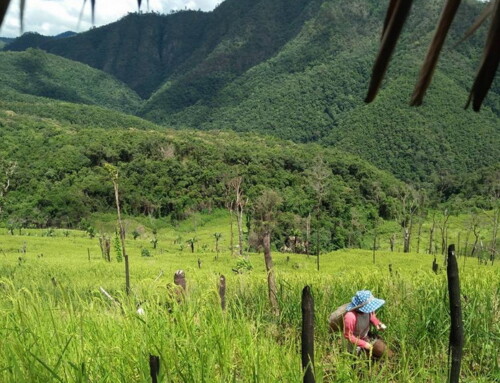
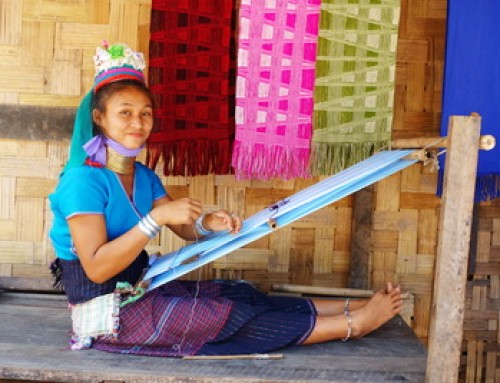






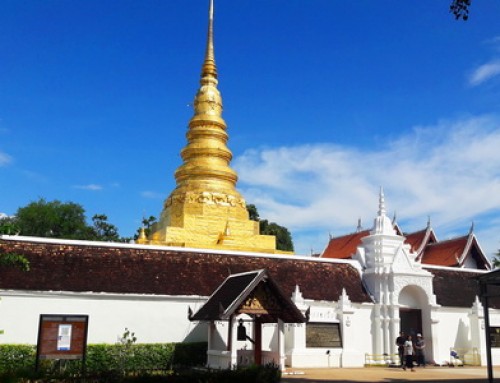
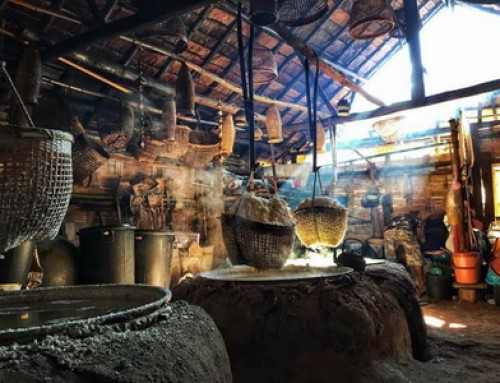
Leave A Comment